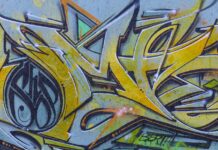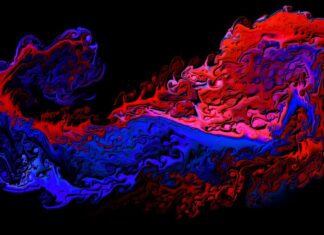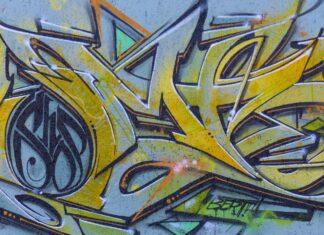NFT Collection refers to a curated set of non-fungible tokens (NFTs) that are often grouped under a common theme or series. NFTs are unique digital assets that are indivisible and represent ownership of a particular item or piece of content on a blockchain. Each NFT in a collection holds distinct attributes, making it different from other tokens within the same collection. These attributes can include art, music, videos, virtual real estate, in-game items, and more. NFTs have gained significant popularity in recent years due to their ability to authenticate and verify ownership of digital assets, offering creators new avenues for monetization and direct interaction with their audiences.
Here are ten important things you need to know about NFT collections:
1. Uniqueness and Indivisibility: NFTs are unique and cannot be replicated or divided. Each NFT has its own distinct characteristics, making it easily distinguishable from others in the same collection.
2. Blockchain-based Ownership: NFTs rely on blockchain technology, which provides a secure and transparent ledger for verifying ownership and provenance of the digital assets. This ensures that the authenticity and scarcity of NFTs can be easily verified.
3. Smart Contracts: NFTs are typically created and traded using smart contracts, self-executing contracts with the terms of the agreement directly written into code. Smart contracts enable automatic royalty payments to creators every time their NFTs are resold.
4. Interoperability: NFTs can be bought, sold, and traded on various online marketplaces and platforms, making them easily transferable between different ecosystems.
5. Diverse Use Cases: NFT collections encompass a wide range of digital assets, including digital art, virtual real estate, music albums, collectible cards, virtual goods in games, and more. This diversity allows creators and artists to explore unique opportunities to monetize their creations.
6. Creator Royalties: One of the most significant benefits of NFT collections is the ability for creators to earn royalties on secondary sales. When an NFT changes hands in the aftermarket, the original creator often receives a percentage of the sale price, empowering artists and content creators to earn ongoing revenue.
7. Community Engagement: NFT collections often foster vibrant communities around them. Collectors and enthusiasts frequently engage in discussions, collaborations, and exclusive events related to the collection, creating a sense of belonging and exclusivity.
8. Scarcity and Exclusivity: Limited edition NFT collections can create a sense of scarcity and exclusivity, driving demand and increasing the value of individual tokens within the collection.
9. Environmental Concerns: NFTs’ association with blockchain technology has raised concerns about their environmental impact due to the energy-intensive nature of some blockchain networks. However, efforts are being made to explore more eco-friendly alternatives.
10. Legal and Copyright Considerations: As the NFT space evolves, legal and copyright issues are becoming more relevant. Questions surrounding intellectual property rights, licensing, and fair use need to be addressed to protect both creators and buyers in the NFT ecosystem.
NFT collections have revolutionized the way digital assets are bought, sold, and valued. With their unique characteristics, blockchain-based ownership, and diverse use cases, NFT collections offer exciting opportunities for creators, collectors, and investors alike. However, the industry must address environmental concerns and navigate legal complexities to ensure sustainable growth and protection for all stakeholders involved.
NFT Collection refers to a curated set of non-fungible tokens (NFTs) that are often grouped under a common theme or series. NFTs are unique digital assets that are indivisible and represent ownership of a particular item or piece of content on a blockchain. Each NFT in a collection holds distinct attributes, making it different from other tokens within the same collection. These attributes can include art, music, videos, virtual real estate, in-game items, and more. NFTs have gained significant popularity in recent years due to their ability to authenticate and verify ownership of digital assets, offering creators new avenues for monetization and direct interaction with their audiences.
NFT collections span a vast array of digital assets, providing creators with a multitude of opportunities to showcase their talents and monetize their work. Artists and content creators can tokenize their artwork or creations and release them as part of a limited edition NFT collection. This approach often creates a sense of scarcity and exclusivity, driving demand and increasing the value of individual tokens within the collection. Collectors are attracted to owning unique pieces and being part of an exclusive community associated with the NFT collection.
Blockchain technology is at the core of NFT collections, enabling the secure and transparent verification of ownership and provenance. Each NFT is represented by a unique token on the blockchain, making it immutable and resistant to counterfeiting. The use of smart contracts further enhances the functionality of NFTs, allowing creators to embed royalty mechanisms. Whenever an NFT is resold on a secondary market, the original creator automatically receives a percentage of the sale price, fostering a more sustainable relationship between creators and their audience.
NFT collections have also led to the emergence of vibrant online communities centered around specific themes or artists. Enthusiasts and collectors come together to discuss, share, and celebrate their favorite NFTs. These communities often organize exclusive events, collaborations, and promotions, further boosting the appeal of the NFT collection and fostering a sense of belonging.
Despite the immense potential and excitement surrounding NFT collections, there are some challenges that the industry faces. One significant concern is the environmental impact associated with certain blockchain networks used to create and trade NFTs. Some of these networks consume large amounts of energy, which has raised questions about the sustainability of NFTs and their contribution to carbon footprints. As a result, efforts are being made to explore more eco-friendly blockchain solutions and minimize the environmental impact of NFTs.
Furthermore, the increasing popularity of NFTs has brought legal and copyright considerations to the forefront. Intellectual property rights, licensing agreements, and fair use regulations are essential factors that must be addressed to protect the interests of both creators and buyers. As the NFT space continues to evolve, legal frameworks must adapt to ensure a fair and secure environment for all participants.
In conclusion, NFT collections have transformed the way digital assets are created, bought, sold, and valued. These unique digital assets offer unparalleled opportunities for creators, collectors, and investors in the digital era. From empowering artists with royalty mechanisms to building engaged communities around creative themes, NFT collections have become a prominent force in the world of digital art and virtual assets. While challenges such as environmental impact and legal considerations need to be addressed, the future looks promising for NFT collections as they continue to shape the landscape of digital ownership and creativity.






















